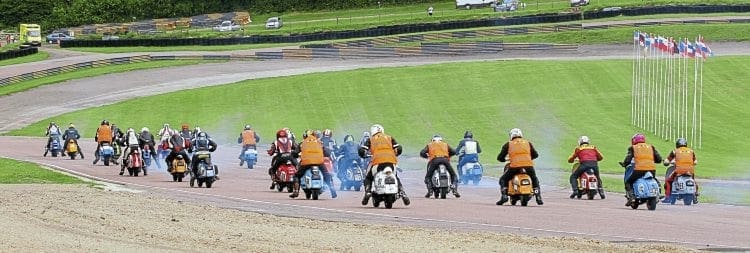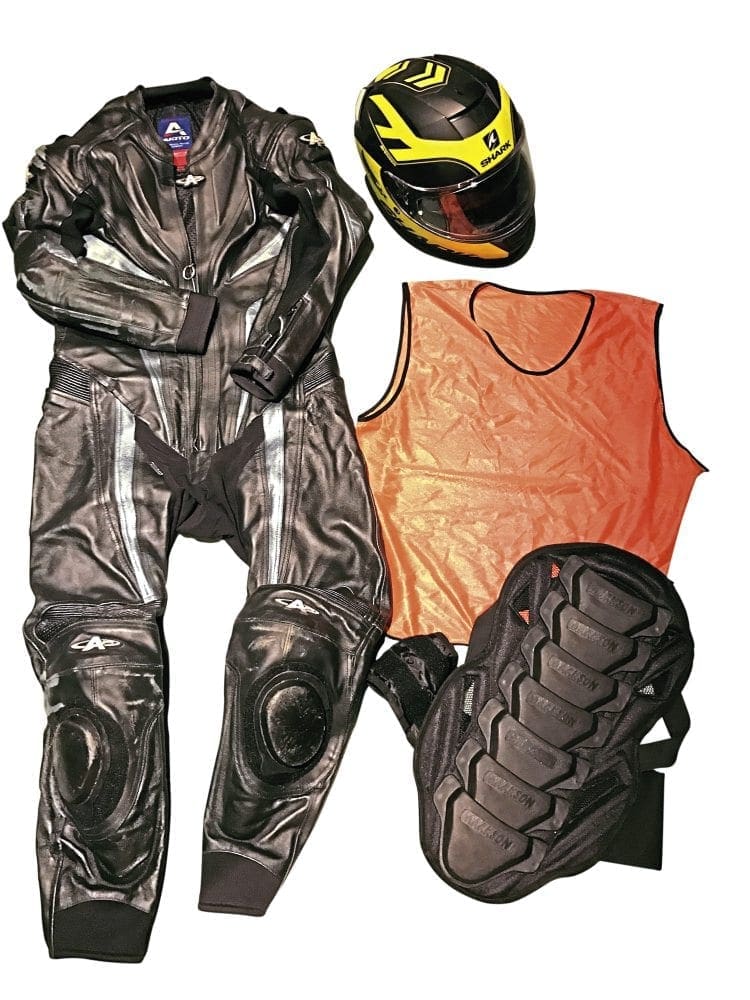Part 2 – choosing your essential equipment
Last month we covered some suggestions for deciding what class to race in and this month we look at some of the things you will need. Some essential, some less so… but each item has an importnat place in the kit of a scooter racer.
Leathers, helmet, gloves and boots
You need good quality one-piece leathers and these can be sourced relatively easily. Second-hand is worth looking at as often they appear on auction sites with little use but in last year’s colours — which should be no problem to most riders. You’ll need a good quality helmet with a gold ACU approval sticker too. Take clear and tinted visors to suit all likely conditions. It’s worth taking a spare helmet if you have one. If you have the misfortune to crash you may damage your helmet so having a spare to enable you to continue makes sense. The same applies to your boots and gloves. With all these items, always buy the best you can. Your health and safety are important and race speeds are ever increasing. You’ll also need an orange ‘beginners’ bib, and a transponder to register your laps/times with race control.
Transport
Think about how you will be transporting the race scooter to meetings and allow for the cost of doing so. A car trailer is okay but a van is the best solution as it has many benefits. It will give you clean dry space for sleeping or just getting out of the elements when it’s raining and cold, which it will be at some time. You need straps to secure the scooter too as you don’t want it moving around and potentially being damaged in transit. A ramp to get the bike in and out the van easily is a good idea. If you get really serious and have a race team or helpers then a caravan or motorhome gives great space to relax and rest although can become a logistical headache.
Tools
Think carefully about what tools you take. In your home workshop you have probably got lots of tools, but you don’t need to take everything to a race meeting. Think about a ‘race’ toolbox. The race box can contain just what you need to work on your race scooter. Take some time to work out just the tools and sizes needed. There’s little point taking 16mm sockets and spanners when you have no 16mm nuts!
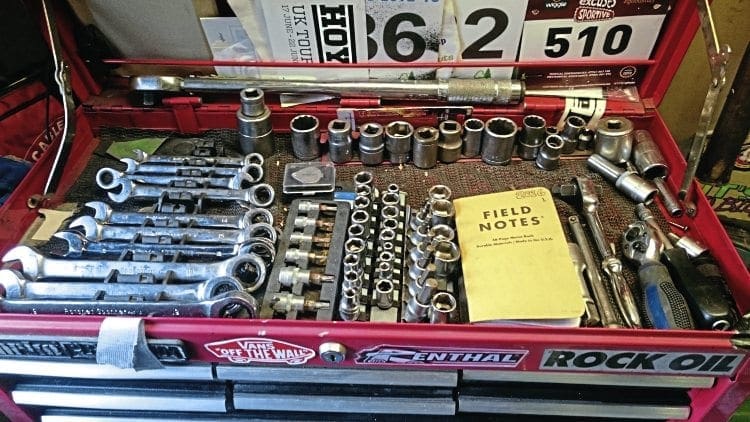
The benefit of a race toolbox is that you can keep it ready to go with just what you need. Keep your box organised and neat. At some point you will need to do repair work quickly so you need to know where everything is. If you have someone helping in a rush you can point them straight to the tools needed.
Tyres
You will need at least dry and wet tyres but it’s also worth having spares of each ready on rims. If you have a puncture or tyre failure then it will only take a minute to swap a built up wheel. There’s nothing worse than finding you have a puncture when you are just about to race.
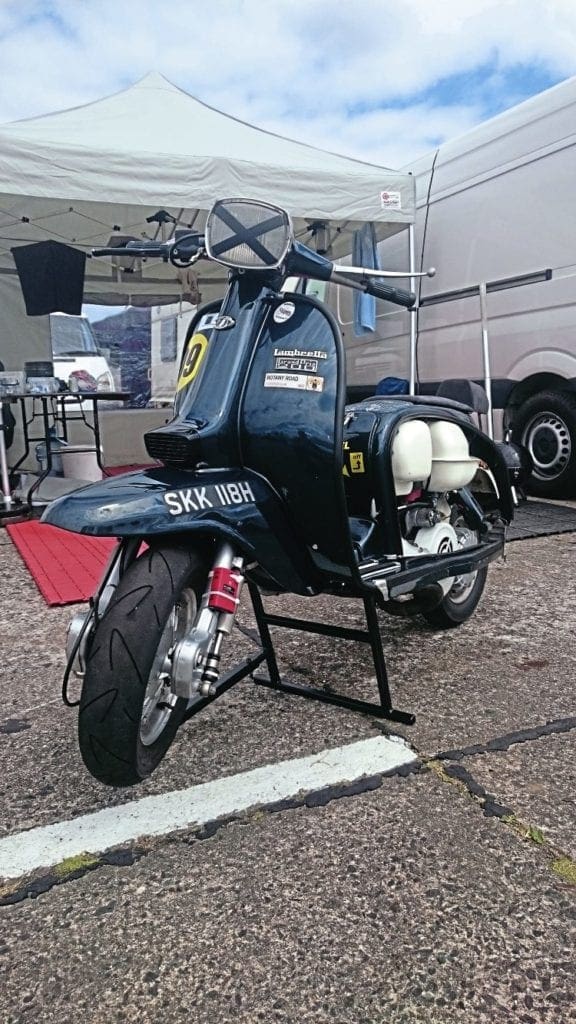
Spare parts
The simple answer is you can never have too many but it makes sense to be smart and carry at least the most essential items that are likely to break. So things like cables are obvious, but something like a fuel cap going astray can stop you racing. It’s a good idea to have a couple of large strong ‘race boxes’ that are stocked with lots of essentials to allow for breakages or repairs. Things like plug caps, spare CDI, switches, nuts and bolts etc. But also consider larger spares that you may need, like a spare complete clutch or gearbox, piston, crankshaft etc. A spare exhaust muffler makes sense as they can be quite fragile and easily damaged in an accident
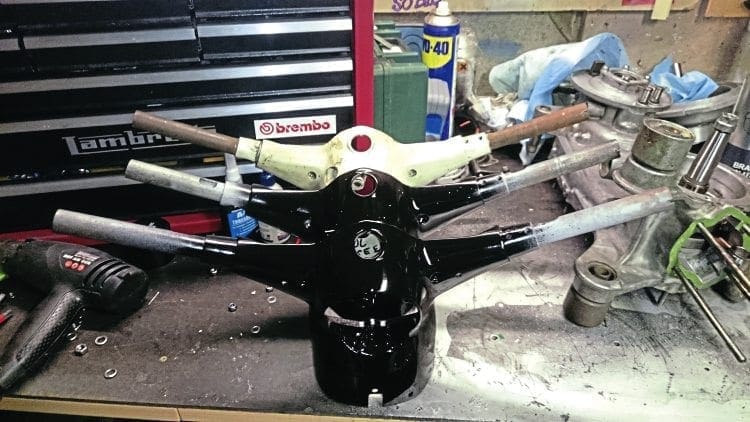
If your budget allows then a complete spare engine makes sense but is a big investment, so a consideration is a lower spec engine that just allows you to get on track. There’s little worse feeling than blowing an engine in first practice, then losing your entry fee sitting on the sidelines. A spare engine even in low specification means you can at least get on track and have some fun rather than wasting your weekend. Also consider the items most likely to be broken in an accident, e.g. brake and clutch levers are often broken along with handlebars.
Fuel
An obvious one this, but take spare fuel. Your engine may be set up for a specific or consistent fuel mix so it’s always wise to be in control of your own fuel so you know exactly what is going into your own engine.
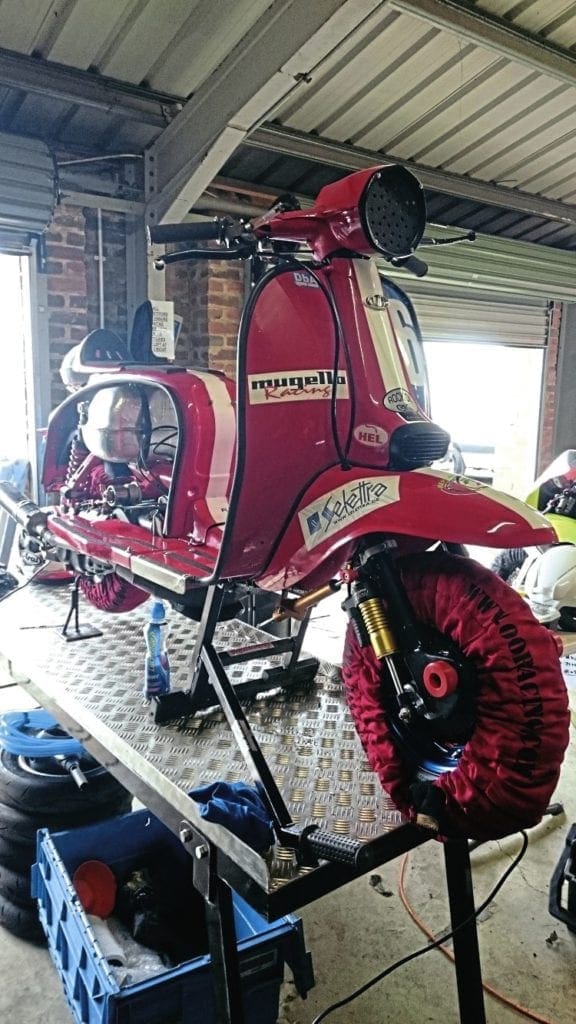
Oils
Spare oil of the right type is important for both engine and gearbox. If you’re using a specific oil you can’t rely 100% on other riders having spare.
Power tools
Powered tools are handy, especially cordless but ensure you keep them charged up. Impact drivers are a very handy tool for many jobs. Always take the chargers in case you need to recharge.
Stands
A paddock stand for the scooter is a great thing to have and much preferred to leaning the scooter against the nearest solid (hopefully) object. Portable work stands are increasingly popular and well worth having. These allow you to work on and prepare the machine at a good height rather than working sitting on the cold and wet floor.
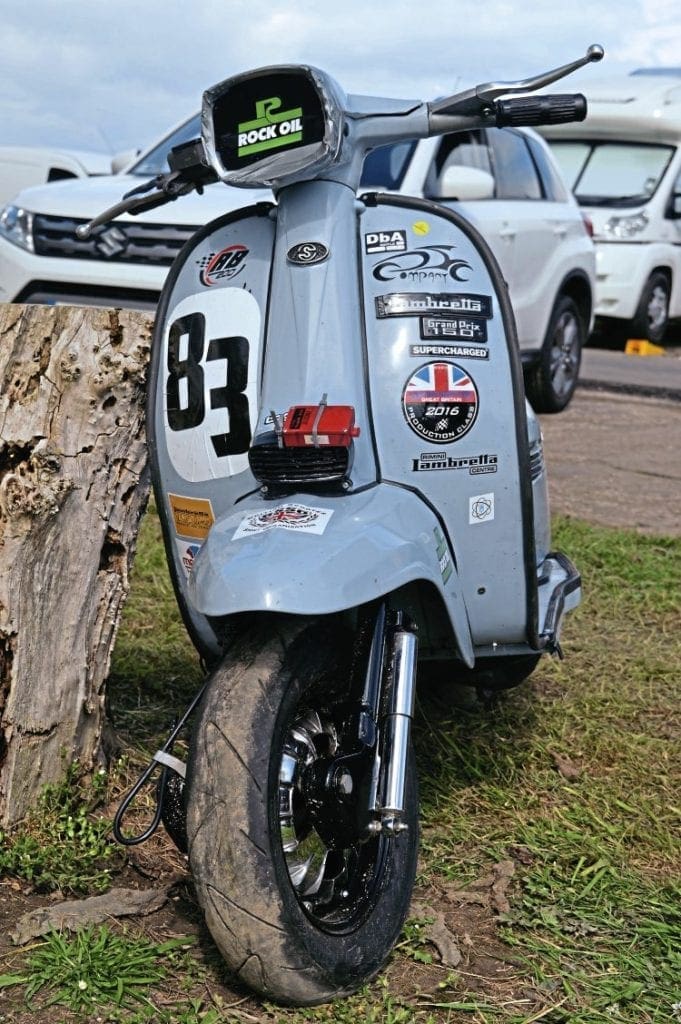
Gazebo
A pop up gazebo is great for setting up your pit area. It will provide a covered area which is useful to have in both hot and cold weather. A good rule of thumb here is to buy the best that you can. A £39 eBay special may only last you a matter of hours! You need a good solid frame that’s designed for the job and able to stand for a windy weekend out on an exposed airfield. A good size to consider is 3m by 3m but if you have a team or lots of supporters then bigger is better to give you clear working space that can be separated from social space.
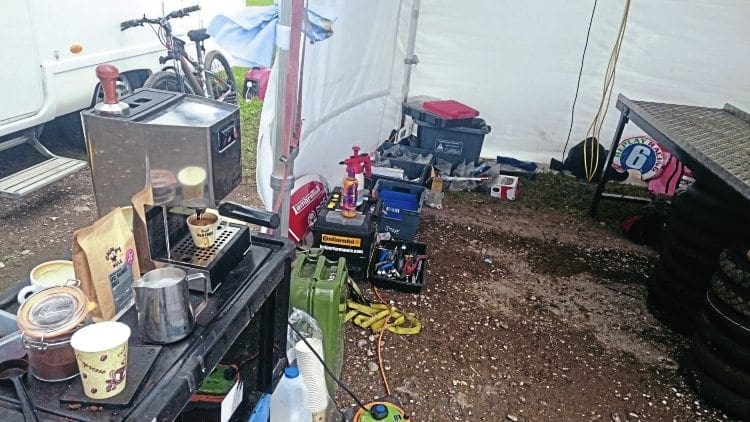
Generators and hook up
Increasingly circuits have some hook ups and pit areas available but these can soon be taken by other teams, so a generator is very useful to power lighting (you may need to make repairs during the evening), tools and tyre warmers as you get serious. Again it pays to buy the best that you can afford in terms of power output but also consider buying the quietest generator that you can find.
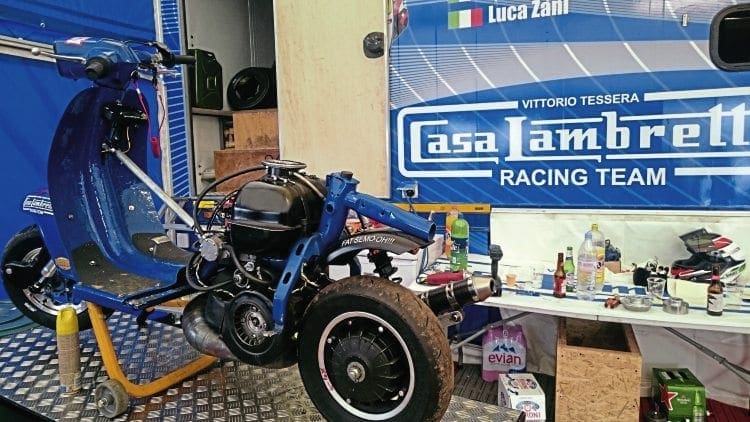
After a few hours sitting beside a unit that’s droning away your ears will be glad of it. Don’t forget long extension leads for power and hook up as you may need to park away from the main power sources.
Helpers
Help and support makes a race weekend so much easier. Whether it is someone to help you fix and repair, or just keep you fed and watered, racing is a social activity off the track and it’s always good to have friends and family with you to share the weekends. You will all have a great time and great memories.

Determination and sense of humour
These are things you definitely need to go racing and they will undoubtedly be tested to the max! You will have good days as well as days when everything appears stacked against you. But the good days will make the bad forgettable.
Words & Photographs: Paul Green

